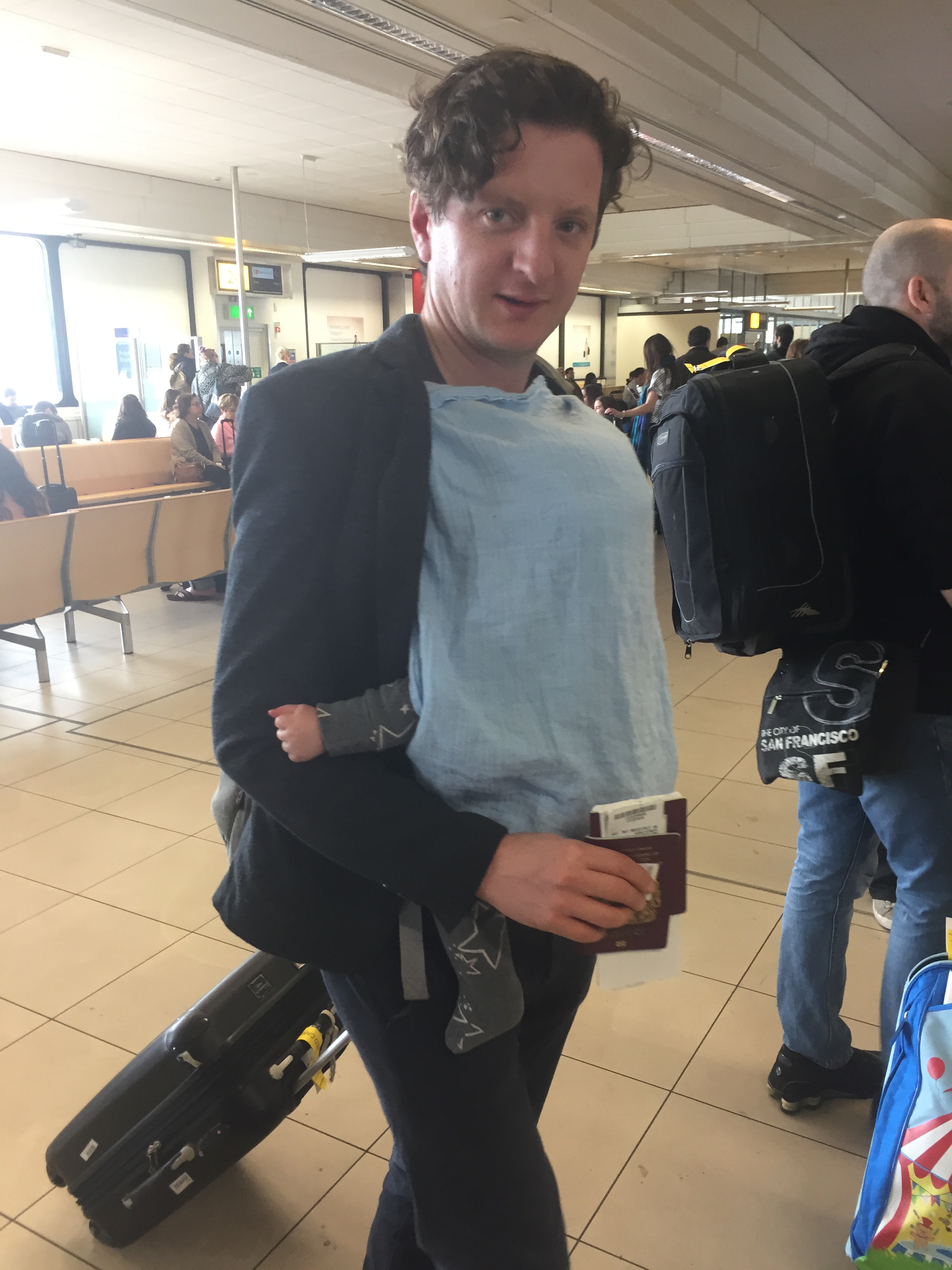Travelling long-haul is one of the few situations where being a sleep-deprived parent comes into its own. You may grumble when your baby or toddler repeatedly wakes you up in the middle of the night, but the benefit of such training is that when it comes to jet lag, you might not really notice much difference – you were tired to begin with, and now you’re just a little bit more tired, but in an excellent new location. Unfortunately, jet lag is almost certain to affect your child. Here’s what you can do to help her through it.
Where possible, book an outbound flight that doesn’t require waking your baby up earlier than usual. Leaving for the airport in the middle of the night or at the crack of dawn is a pain as an adult, and doing it with a baby is worse. You want her as well rested as possible before you go. Similarly, encourage napping on the plane – easier said than done, of course, but always worth a go. I’ll go into this further in a separate post, but the sling is your friend in this situation.
Make a call depending on where you’re going about whether to adjust to the new time zone. If the difference is less than four hours, and you’re heading east, keeping your baby on home time can be a good workaround – she eats with you at adult dinner time and stays up until your bedtime, meaning no need for babysitters or spending your evening sitting in a hotel room in the dark beside your sleeping child (some useful hotel room tips here).
You can prepare for a bigger time difference by moving your’s baby bedtime forward or back a bit in the days leading up to the trip. I’ve personally never got organised enough to do this with the baby girl, but a couple of friends swear by it, and I plan to try it next time we travel long-haul.
Once you get to your destination, you might find that your baby sleeps really well the first night because she’s exhausted from the journey, but is wakeful at night and grumpy in the day after that. Don’t worry, it will pass; it’ll just take a few days – four probably. (And don’t worry about getting back into a sleep routine after the trip – that too will take a little while, but it’ll happen eventually.) But bear these timings in mind when booking your trip – if you’ve got less than 10 days to play with, a smaller time difference might be a better idea.
Being easy on yourself during those first few days is crucial, including not attempting any ambitious adventures until you and your baby are adjusted to the new time zone. Nap when your baby does so you’ve got some energy to cope with additional nighttime wake ups, and spend some time outdoors – day light helps kick the body clock into line.
Try to keep your baby’s bedtime routine as close to what it is at home so she knows on some level that it’s time to sleep even if her body is telling her the opposite. She might be hungry when she wakes at night – whether or not you feed her will depend on how you manage night feeds generally. My thinking with these things is just to go with it and trust that your baby will work it out eventually.
If you’re a breastfeeding mother, bear in mind that your milk production might go a bit haywire as it adjusts to your baby demanding feeds at different times (your boobs are jet lagged, basically). Pack a few extra sets of nursing pads to deal with possible leaks, and remember to drink plenty of water. (I’ll be going into greater depth on breastfeeding while travelling in a later post, so sign up to the mailing list to make sure you don’t miss it).
When it comes to jet lag so much depends on where, when and how you travel, as well as on the foibles of your particular child, so please share your baby and toddler jet lag hacks by commenting below. Forewarned is forearmed.

